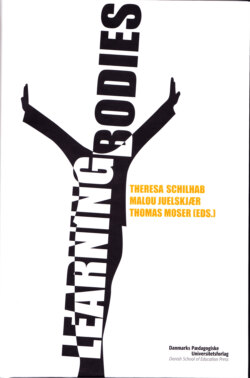Читать книгу Learning Bodies - Группа авторов - Страница 24
На сайте Литреса книга снята с продажи.
Discussion
ОглавлениеWhat is embodiment? In this chapter, we have focussed on biological instantiations of the phenomenon. We have analysed hypothetical as well as actual experiments to substantiate the claim of embodied cognition. In some instances, there seems to be a clear overlap between the arguments and examples given. Consider the distinction between the vocabulary of the interactional expert and the vocabulary of the contributory expert. On the surface, these vocabularies may seem identical in the sense that nobody can tell the interactional expert and the contributory expert apart based only on their verbal behaviour. Nevertheless, and as argued above, there is reason to believe that interactional and contributory experts do differ in cognitive terms – for instance, in linguistic memory. A similar argument can be made with respect to action knowledge and the comprehension of artefacts. Patients with apraxia (a breakdown in the performance of skilled movements) do know that hammers are used for driving nails in the wall but may nevertheless be unable to demonstrate how this is accomplished in reality: they know “what for” but not “how to” (Buxbaum & Saffran 2002). Hence, while their “verbal” knowledge may seem intact – as they can tell what things are for, their knowledge of tools is impoverished compared with that of normal subjects. As an example, patients with apraxia may be able to tell which objects in figure 4 are similar in function (upper panel) but not which are similar in the manner of manipulation (lower panel). When scrutinised, similarly impoverished semantic representations are likely to be uncovered in interactional experts compared with contributory experts.
Figure 4
Throughout this chapter, we have aimed at demonstrating the existence of embodied cognition rather than presenting a full and particular account. Conveniently, we have refused to compare systematically and consequently to discuss any inconsistencies among different instances of embodied cognition. Certainly, there are differences. For one, biking as depicted here amounts to an overt motor activity, while the empirical studies are purely “mental”. What is more, by focusing on mental studies, some might find that we stretch the notion of embodiment (too far). How do we defend the conjecture that brain activity that usually sustains motor knowledge equals embodiment?
For instance, how can we be sure that the putative brain activity is a necessary precondition for the cognitive act referred to because of its involvement in motor activity in general? Are we certain that cortical activity normally correlative of motor knowledge is correlative of motor knowledge on all occasions? At least two assumptions seem to be in play.
First, we grant that the interpretation of activity in brain areas relating to for instance motor knowledge (when subjects solve mental tasks) rests exclusively on converging evidence from lesion studies. Second, we take motor knowledge to imply that motor activity is involved at some level. In fact, even if the first assumption were to be corroborated, the second would not follow by necessity.
Think of brains in a vat that had never been implemented in a body. It is conceivable that they would still employ motor areas when solving Shepard and Metzler’s task of mental transformation.
However, to drive the argument home that mental transformation and cognitive tasks are embodied because they are sustained by motor knowledge, we distinguish between natural and logical possibilities.
To illustrate this distinction: both a cubic mile of gold and a cubic mile of uranium-235 seem to be logically possible, but as far as we know, only the first is naturally possible – a (stable) cubic mile of uranium-235 could not exist in our world (Chalmers 1996, 37).
By analogy, we cannot conceive of a brain that has never actually engaged in real life interactions –much less so, as it could not subsist outside the body. In conclusion, we admit that embodied cognition as presented here is heterogeneously defined and welcome any complementary analysis on the issue.
